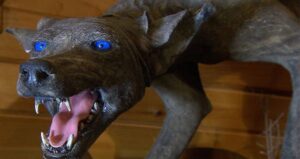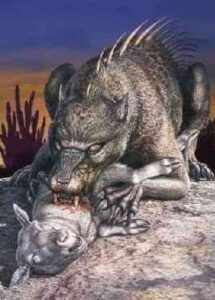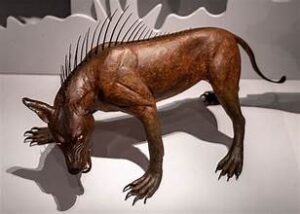
The Chupacabra, a name derived from the Spanish words “chupar” (to suck) and “cabra” (goat), translates to “goat-sucker” in English. This elusive and enigmatic creature has captivated the imaginations of many and sparked numerous debates and investigations. In this article, we will explore the Chupacabra phenomenon, examining its origins, the various reports and sightings, and the theories surrounding its existence.
The Origins of the Chupacabra Legend
The legend of the Chupacabra first emerged in Puerto Rico in the late 1990s. Reports described a creature that attacked livestock, particularly goats, and drained their blood. The initial descriptions characterized the Chupacabra as a reptilian entity with spikes running down its back. The creature was said to be about 3 to 4 feet tall, with large, alien-like eyes and a row of spines or quills.
As the story spread, similar reports began to surface in other Latin American countries and eventually in the United States. Each account varied slightly, but the core details remained consistent: an unidentifiable creature preying on animals and leaving behind a distinctive pattern of blood loss.
Common Descriptions and Sightings
Descriptions of the Chupacabra vary significantly, reflecting the creature’s evolving legend. In Puerto Rico, it was often described as a reptilian creature with a spiked back. In Mexico and other parts of Latin America, however, it was sometimes reported as a more canine-like animal with a thin, emaciated appearance.
One of the most famous sightings occurred in 1995 in Puerto Rico, where several livestock were found dead with puncture wounds and completely drained of blood. This event sparked widespread media coverage and fueled speculation about the Chupacabra’s true nature.
Theories and Explanations
1. Cryptozoological Theories
Some researchers believe that the Chupacabra might be a yet-undiscovered species. Cryptozoologists, who study creatures whose existence is not scientifically proven, suggest that the Chupacabra could be a rare, predatory animal that has eluded scientific discovery. Proponents of this theory point to the variety of descriptions and the lack of physical evidence as indicative of a real, though elusive, creature.
2. Misidentification of Known Animals
Many scientists argue that Chupacabra sightings can be attributed to the misidentification of known animals. For example, the reports of Chupacabra in a canine-like form are often linked to cases of mange. Mange, a skin disease caused by parasitic mites, can cause animals to lose their fur, leading to a gaunt appearance and making them look otherworldly.
In other cases, the mysterious attacks on livestock could be attributed to wild animals such as coyotes or foxes. These animals, when desperate for food, might attack livestock and leave behind the puncture wounds and blood loss reported in Chupacabra cases.
3. Hoaxes and Fabrications
There have been instances where alleged Chupacabra carcasses turned out to be hoaxes. Some of these cases involved taxidermy or fabricated evidence designed to attract attention or create a sensation. In several instances, people have presented fake Chupacabra remains that, upon closer examination, turned out to be a mix of various animal parts or poorly constructed models.
Cultural Impact and Popularity
The Chupacabra has left a significant mark on popular culture. It has been featured in numerous books, documentaries, and television shows, often as a central figure in supernatural or cryptozoological narratives. Its legend has inspired a variety of artistic works, from movies to music, reflecting its deep impact on the collective imagination.
Moreover, the Chupacabra phenomenon has also influenced local folklore and cultural practices. In some regions, it is considered a symbol of mystery and fear, and stories about the creature are passed down through generations as part of the cultural heritage.
Conclusion
The Chupacabra remains one of the most intriguing and mysterious creatures in modern folklore. Whether it is a genuine, undiscovered species, a case of misidentified animals, or simply a product of hoaxes and exaggerations, the Chupacabra phenomenon continues to fascinate and puzzle both researchers and enthusiasts alike.
As we unravel the mystery behind this legendary creature, it is essential to approach the subject with a critical mind and an open heart. While the Chupacabra’s true nature remains elusive, its impact on popular culture and its role in the broader narrative of cryptozoology ensure that it will continue to be a topic of interest and debate for years to come.


















